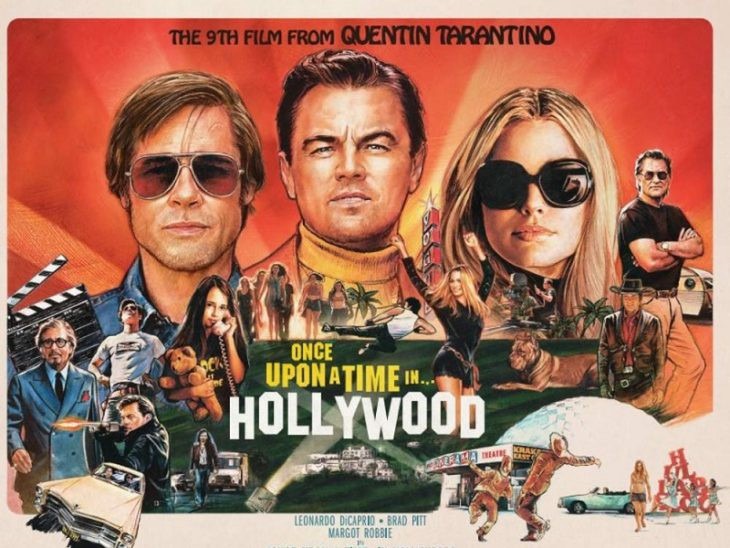Film & TV
Review: Once Upon A Time… in Hollywood

The reference to Sergio Leone’s classic “Once Upon a Time in the West” in the title of Quentin Tarantino’s ninth picture, “Once Upon a Time… in Hollywood,” is intentional. It’s a wink at the way Westerns toy with history and how much of an effect the genre had on Tarantino’s current film. Tarantino has fashioned an elegiac homage to a time he has only seen via books and movies, just like the Western has frequently used actual people and locations as templates to produce fictitious stories. When asked if he attended film school, Tarantino once responded, “No, I went to films.” Every scene in “Once Upon a Time… in Hollywood,” a film only he could have conceived of, is infused with that cinematic expertise. Hardcore “Pulp Fiction” and “Inglourious Basterds” viewers may be disappointed. At its darkest, it evokes the fabled era when cinema, reality, and fantasy could all coexist, and the hope of the people living on the outskirts of the City of Angels.
The Plot
In the ’60s Los Angeles, a washed-up TV actor and his stunt double work to revive their careers during the end of Hollywood’s Golden Age.
Review
Once Upon a Time in Hollywood takes place primarily over the course of one weekend in February of 1969, where we are introduced to Leonardo DiCaprio’s TV actor Rick Dalton and his longtime stuntman and best friend Cliff Booth (Brad Pitt). Rick, formerly the star of the popular Western series “Bounty Law,” is at a crossroads in his life and career because he knows that his days as a heroic action star are numbered now that he’s past his prime in Hollywood. A studio executive, played by Al Pacino, suggests that Rick travel to Italy to try his hand at the genre of spaghetti westerns. Cliff is a lot more chill, the type of person who loves his dog almost as much as he loves Rick and who doesn’t mind saying what’s on his mind, even to a famous actor like Bruce Lee (Mike Moh), whom he fights in one of the film’s most popular moments. Tarantino surrounds his imaginary characters with recognisable actors and actresses, such as Steve McQueen (Damian Lewis) and James Stacy (Timothy Olyphant).
The most contentious historical individuals, Roman Polanski (Rafal Zawierucha) and Sharon Tate, lived next door to Rick Dalton (Margot Robbie). Robbie’s low line count has been discussed extensively, and the reason for this is that Tarantino doesn’t view Tate as a person but as an idea—a peek of Hollywood’s hopeful happiness. Every time she appears on-screen, whether she’s dancing at a party in the Playboy mansion or slipping into a public screening of “The Wrecking Crew,” she seems to radiate a warm glow that serves as a balance to Dalton’s growing unease. Even though the plot isn’t directly about Sharon Tate or the hippies at Spahn Ranch, Tarantino knows that presenting a star we know will be snuffed out in the real world adds a sense of melancholy and dread to the entire production.
It is Tarantino’s intention for the majority of the film to be a hazy portrayal of the film industry and daily life in Hollywood during the late 1960s. Numerous scenes show Cliff driving Rick around town, primarily to highlight the fantastic set design, vintage automobiles, and radio playlists. Tarantino and master cinematographer Robert Richardson take a very calculated approach, but the picture never sacrifices its dreamy aesthetic for the sake of realism. After all, we’re watching a movie that’s not so much about an era as it is about the movies of that age. It’s a time and place that’s been fictionalised for dramatic effect, reflecting an era as seen through the eyes of Hollywood elite rather than academic experts. Long discussion sections that some QT fans might claim lack the snap and zip of his most entertaining work but feel more in touch with his character-driven scenes in something like “Jackie Brown” make for an engrossing film to just dwell in.
Final Verdict
One thing is certain, though: I need to rewatch this movie immediately. It’s complex and daring because it was made by a director who believed in his own vision and who surrounded himself with talented artists who shared that belief. There is no misfitting. No decision is made without thorough deliberation. Audiences will have to judge if the film’s premise has any meaning, but it certainly seems set to stick around for a while. It’s one of those rare films that will last longer in people’s memories than the latest box office smash because it will spark meaningful discussion and debate. Whether you like it or not, it’s sure to spark debate. That’s another thing that the older Tarantino and the newer one have in common. He’s still got the same ability to get folks riled up. We need a lot more people like him.